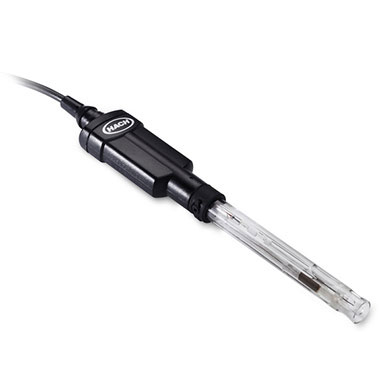-
English (US)
Choose your country or region:
Europe
Asia - Australasia
Middle East - Africa

Accurate sodium monitoring is crucial across a variety of industries, given its impact on water quality and process efficiency. Hach® offers tailored solutions with a comprehensive range of sensors, reagents, and analyzers, ensuring precise measurement and management of sodium levels.
Across both industrial and municipal applications, these sodium measurement solutions deliver the precision and reliability needed to prevent a variety of problems including:
Trust in Hach's solutions to provide the necessary tools for effective sodium monitoring and management.


Benchtop instruments can provide fast, accurate sodium measurements when quick results are needed.


The Hach IntelliCAL ISENA381 Sodium (Na+) Ion Selective Electrode (ISE) improves confidence in the sodium testing procedure.
Presence of sodium in concentration as low as micrograms or even nanograms per liter in steam before the superheater, may cause its stress corrosion.
Under the conditions of high pressure and temperature of today’s power plant, the problem of steam solubility of inorganic compounds is increasingly important.
Of significance is the steam solubility (in addition to carry-over) of sodium compounds, e.g. sodium chloride (NaCl) and sodium hydroxide (NaOH), because of the possibility of stress corrosion cracking in the superheating section. The measurement of sodium directly in steam immediately before entering the superheater is now recognized as a strong indicator of possible stress corrosion in the superheater.
It should be noted that corrosion will occur only if sodium is present with chlorides or hydroxide anions and not, for instance, with sulfates. Chlorides and hydroxides are corrosive, but not the sodium. The latter serves only as the carrier, specifically. Specifically, for plants with low boiler pressure (40-80 bars). Since non-volatile boiler treatments are typically sodium based (i.e. a mixture of sodium phosphate tribasic and sodium phosphate di-basic), the measurement of sodium in the steam is an excellent indication of mechanical carryover from the drum into the steam.
Sodium measurement should be the preferred option for early warnings of excursions on condensates to minimize associated risks.
Condensate polishing plays a vital role in power plant cycle chemistry, providing the means to reduce the transport of metal oxide and ionic impurities to the steam generator during all modes of operation, mostly during start-up and upset conditions. The benefits of condensate polishing are:
Careful management of condensate polishing systems is essential; otherwise polishing plants can become a source of ongoing feed system pollution. Extracting the maximum benefit from condensate polishing systems continues to be a top priority among many electric utility plants.
Although cation and specific conductivity are used frequently to detect excursions in the water/steam loop, it is no longer sufficiently sensitive to measure the very small condenser leaks which have assumed greater importance in modern plant designs. In everyday conditions (with possible temperature, pressure and flow upset or high conductivity background levels), the minimum meaningful variation will be 0.02 mS/cm. This corresponds to 11 ppb sodium.
Sodium analysis is much more sensitive. A Hach NA5600 sodium analyzer can accurately measure below 0.1 ppb. This is 100 times more sensitive than a conductivity measurement. Just as water quality is critical, early signs of excursions are also critical. Sodium measurement should be the preferred option to minimize risk.
Steam purity can be more accurately assessed by measuring sodium concentration in both steam and condensate, thus determining the “sodium balance.” The two concentrations should be equal. A higher level of sodium in the condensate indicates a condenser leakage. A lower level of sodium in the condensate indicates deposition of sodium in the steam circuit (on heat transfer surfaces, on turbine blades, etc.).
Sodium measurement is the only online technique that achieves accurate and rapid response at any time to detect traces of hydroxides and chlorides known to be contributory factors in the stress-corrosion of austenitic steel.
The origin of the de-superheating water is the condensate water. The quality of the de-superheating water must be without any doubt. If it is contaminated, this contamination will be brought directly into the de-superheated steam. The section most likely to be affected is the section of the superheater immediately following the point at which the de-superheater spray water is injected. It is made of austenitic steel for its mechanical behavior (low thermal dilatation coefficient), but it is more sensitive to corrosion (increased percentage of iron versus carbon). To avoid the catastrophic effect of impurities in the de-superheating water, any excursion must be detected as quickly as possible.
Online sodium measurement is the only technique that achieves accurate detection of excursions. A Hach NA5600sc sodium analyzer will ensure a rapid response at any time through regular reactivation of the electrode.
For a demineralization plant, online sodium measurement is all about ion exchange resin management. (Learn more about hardness). Customer benefits are:
Cation resin bed exhaustion and its regeneration timing can be monitored with high sensitivity and reliability using online sodium analyzers. Cation resins remove cations such as sodium (Na+). Sodium is the first cation that breaks through when the cation resin bed is exhausted.
Measuring sodium immediately after cation resins gives an early warning of breakthrough. Removing the saturated resin bed and replacing it with a new (regenerated) one protects the ion exchange capacity of the mixed-bed resins installed farther down the stream.
Quality of the incoming water, the resin quality itself, and temperature modifies the ion exchange capacity of the cationic resin bed. This influences the time before the next regeneration. When this time is indicated by a simple volume of sample running through the resin, it is an estimate that may lead to saturation and breakthrough or underuse of resin capacity. Online measurement of sodium allows regeneration of the cation resin as required.
After mixed bed resins, online sodium analysis ensures the quality validation of the demineralized water delivered to the make-up plant. Mixed bed resin contains a mixture of both cation and anion exchange resins for a fine polish of the pure water. It reduces any contaminant left in the pure water.
Remarkable progress has been made over the past decade to reduce the levels of contaminant ions in the treated water from mixed beds. Specifically, in nuclear plants (PWR), mixed beds treated water purity is reported in steady state values at 25 to 35 ppt for sodium. Here, sodium analyzers are used to monitor the final water quality, acting as a final check of quality. Hach NA5600 sodium analyzers are used to check the quality of the final water down to 20 ppt levels.
Additionally, a malfunction of the regeneration cycle of the mixed bed resin is detected by sodium monitoring. Release of sodium can happen by accidental caustic release when there is insufficient rinsing of the mixed bed anion resin. Again, the warning comes earlier and with higher precision with a sodium analyzer than by conductivity.
Sodium levels lower than 1 ppb are commonly found at the mixed bed output, both in the steam circuit and in the condensate. Levels of 0 - 10 ppb can be found under normal working conditions at the cation exchangers output, but this can become as high as 100 ppb at the resin exhaustion or in boiler water.

The Sodium Ion Selective Electrode (ISE) is a sodium-sensing element that is bonded into an epoxy body. When the sensing element touches sodium ions in a solution, a potential develops across the sensing element.
The potential is proportional to the level of sodium ions in the sample. The potential is measured against a constant reference potential with a pH/mV meter or ISE meter.
Intellical™ ISENa381 is a digital, combination, sodium ion selective electrode (ISE) with a refillable double junction reference and built-in temperature sensor. The electrode measures sodium concentration in water samples. A 59 mL bottle of 0.02 M NH4Cl Electrode Filling Solution is included with the probe.
The laboratory version of this ISE is shockproof with its Zeonor plastic body. The Intellical ISENa381 probe is available with a 1 or 3 meter cable and is intended for laboratory use. The ISENa381 is ideal for measuring sodium concentrations in wastewater, drinking water and general water quality applications.
NA5600sc Sodium Analyzer uses an ion-selective electrode measurement after pH conditioning. Sample pH conditioning is essential for limiting the interference of temperature or other ions on sodium measurement.
Constant, temperature-compensated buffering is assured using regulated reagent addition across sample pH and temperature changes. In case of a multi-channel version, the “smart” rinsing sequence between channels ensures a minimum cycle time of 10 minutes and no carry-over effect.
Ranges:
Contact us for tech support, service, sales, or to get a quote.